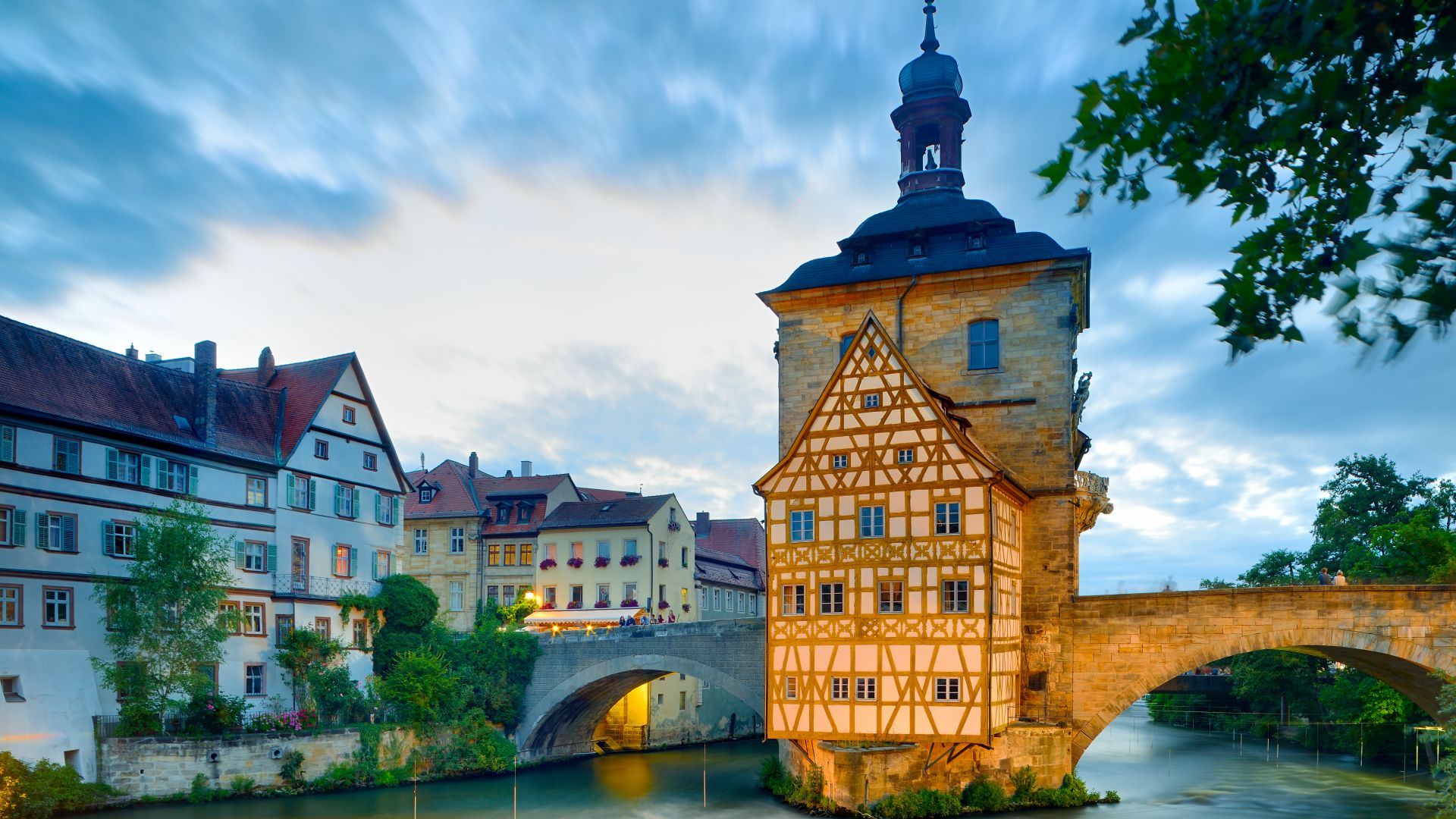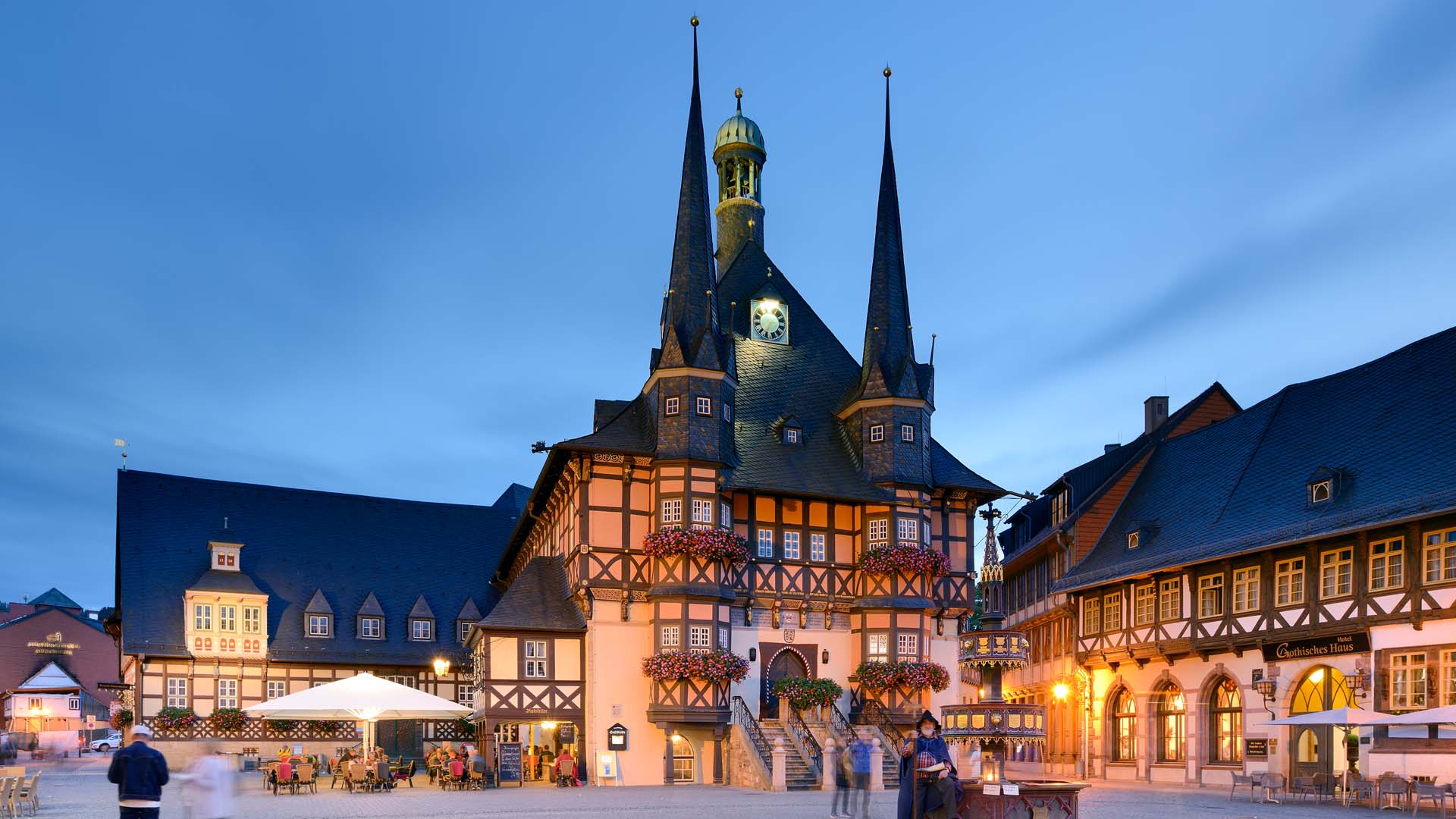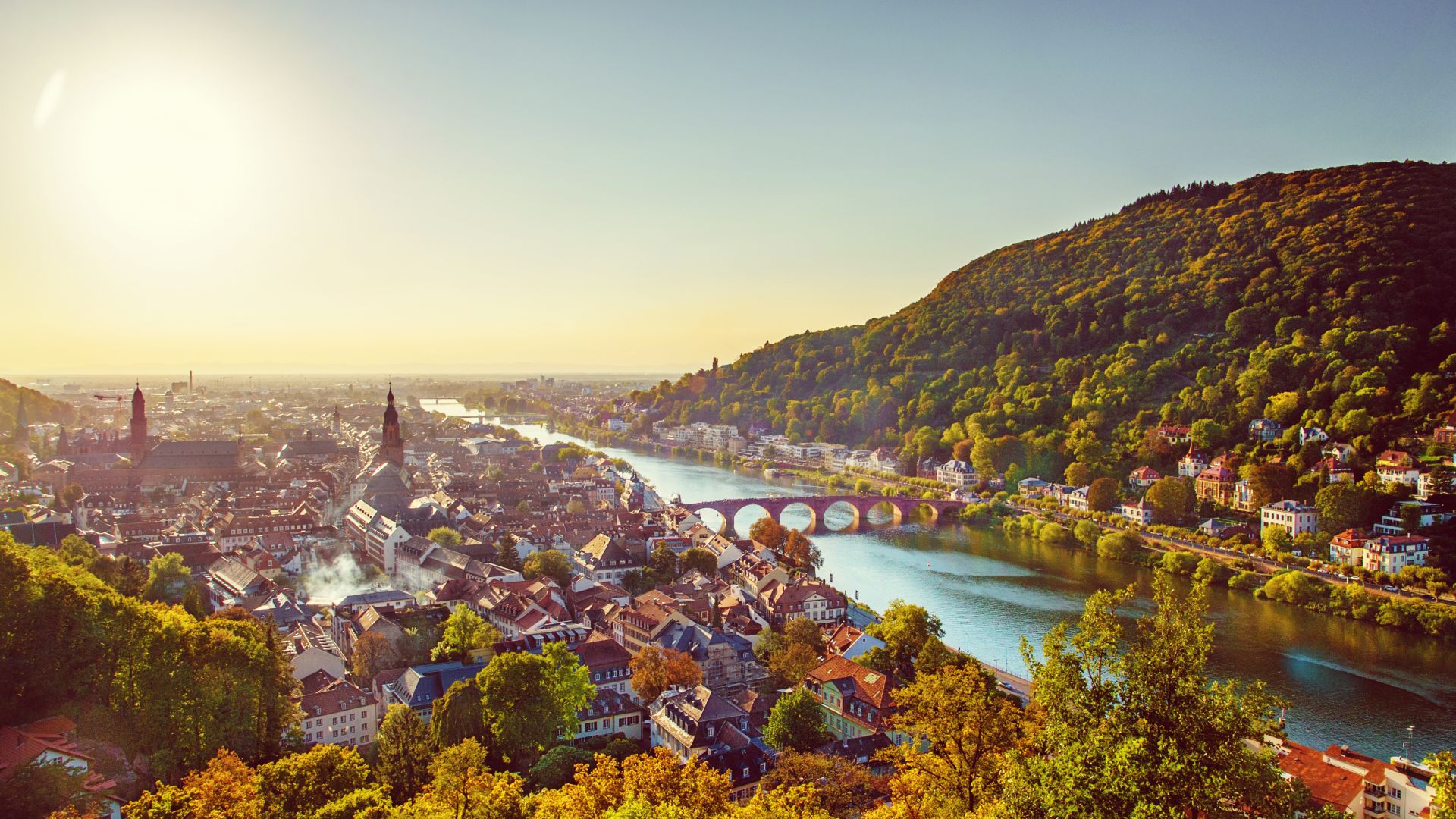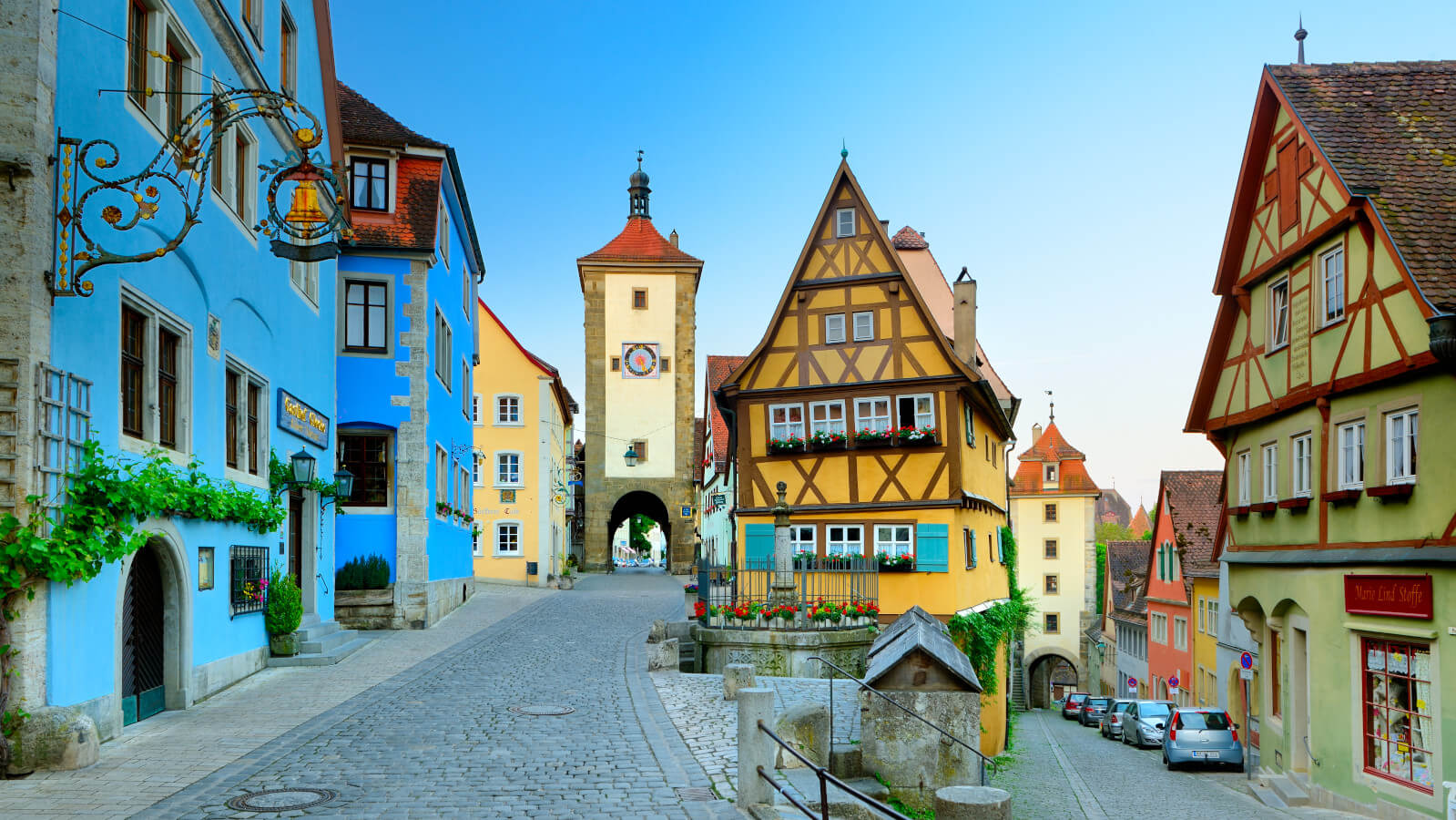Cities & Culture
Strongholds of Romanticism: a hotspot for medieval splendour
In some towns, it's not the individual "stars" that impress, but the whole sky. These are the Old Towns whose medieval and/or baroque collections of half-timbered houses, turrets, churches and alleyways create a harmonious picture.
Bamberg: between Baroque and Bock beer
 Bamberg: UNESCO World Heritage, The old Town Hall with bridge_Leitmotif German Summe Cities
©DZT (Francesco Carovillano)
Bamberg: UNESCO World Heritage, The old Town Hall with bridge_Leitmotif German Summe Cities
©DZT (Francesco Carovillano)
Built on seven hills? That sounds like Rome, but this is also true of Bamberg. Resulting in its nickname of "Franconian Rome"! Its Romanesque cathedral (including the only papal tomb north of the Alps) is not as large as St. Peter's, but still significant, and is situated in the UNESCO World Heritage Site Old Town. Its urban masterpieces are also unique, with medieval charm meeting Baroque splendour. There are three historic districts: Bergstadt, Inselstadt and Gärtnerstadt. Certainly, the 142 hectares have a lot going for them, with around 1,300 listed buildings to be precise. The Old Court, the New Residence with its extensive rose garden, and the Old Town Hall, decorated with façade paintings and situated on a little island in the Regnitz River, are stand-outs. It's a fact: a stroll through the streets can make you thirsty. The assortment of 13 local breweries, ranging from Rauchbier to Kellerbier to Bockbier, alongside another 60 in the surrounding area, provides a refreshing solution. Now there's a record that Rome cannot match...
Wernigerode: the colourful town in the Harz Mountains
 Wernigerode: Town hall on the market square in the evening
©DZT (Francesco Carovillano)
Wernigerode: Town hall on the market square in the evening
©DZT (Francesco Carovillano)
No matter which route you take to this picturesque Harz town, you will be greeted by the Wernigerode Castle on the Agnesberg hill. Return this greeting by paying it a visit. One reason for visiting is the 50 or so residential rooms belonging to the German aristocracy, some of which have original furnishings, and the other is the fantastic view of the nearby Old Town from the extensive palace gardens. Their half-timbered houses are not only lavishly restored, but also immensely colourful. Standing in front of the magnificent benefactor's fountain, the town hall with its two towers acts as a shining (red) example. The "Smallest House", the remains of the town wall and the Krummel House, with its front completely covered by a carved wooden façade, are also a feast for the eyes. Considerably more timber can be found in the nearby Harz National Park. If the ride on the Brocken Railway is too long for you, you can get a ("mini") glimpse of the most interesting places in the Harz mountains at the Wernigerode Miniature Park. Wernigerode Castle also sends its regards.
Heidelberg: a magical attraction
 Heidelberg: View over the city and the river Neckar
©Getty Images (Elisabeth Schmitt)
Heidelberg: View over the city and the river Neckar
©Getty Images (Elisabeth Schmitt)
Once the former capital of the Electoral Palatinate, it's easy even for newcomersto see whythe UNESCO-named "City of Literature" is so popular with more than just bookworms and history buffs. The idyllic location on the Neckar river and Königstuhl hill, together with the historical flair and the student vibe (thanks to Germany's oldest university), give this town its irresistable charm. You'll start to fall for Heidelberg the moment you stroll through the Old Town, with its baroque façades, the Gothic Heiliggeistkirche (Church of the Holy Spirit) on the market square and its bustling alleyways, and then appreciate it even more when you visit the famous castle ruins. The terraced castle built of red Neckar sandstone, a prime example of German Renaissance architecture, is not only the city's landmark but also one of the most visited sights in the country. Thanks to the enchanting Harry Potter programme of the German Pharmacy Museum housed there, even children like to join in on a tour.
Rothenburg ob der Tauber: a medieval setting fit for a movie
 Rothenburg ob der Tauber: junction of Kobolzeller Steige and Spitalgasse at the Plönlein
©DZT (Francesco Carovillano)
Rothenburg ob der Tauber: junction of Kobolzeller Steige and Spitalgasse at the Plönlein
©DZT (Francesco Carovillano)
Thanks to King Ludwig I, who was one of the first to commit himself to the preservation of monuments here, "Franconian Jerusalem" still has a completely preserved, four-kilometre-long city wall today. And so today's wall walkers enjoy the view over the lovely valley of the Tauber on the one hand and the up to1,000-year-old townscapeon the other. The many towers, churches, red-brick town houses and garden retreats are an amazing sight from above. And even more so from street level – although from alleyway level might be a more accurate description. Most tour groups - and there are many of them, meet at the pretty market square with the magnificent town hall, which is situated just a few minutes' stroll from the Plönlein (the small square at the fountain). Surrounded by a leaning half-timbered house with a fountain in front of it, this group of buildings is considered to be Rothenburg's best-known photo feature. And not only that: it regularly appears in films, PlayStation games and even manga – as a quintessential medieval setting...